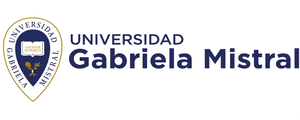Gabriela Mistral University Repository
The Gabriela Mistral University Library has developed the following Academic Repository in order to preserve, disseminate and make available the full-text contents of the academic production developed by the different actors in the academic and research field of the University.
The UGM University at the beginning of the year 2017 incorporated the UCINF University, also adding that collection where we find memories, theses, degree works, academic magazines, speeches, books, digital and sound files. Contact: [email protected]
The UGM University at the beginning of the year 2017 incorporated the UCINF University, also adding that collection where we find memories, theses, degree works, academic magazines, speeches, books, digital and sound files. Contact: [email protected]
Las seis edades del mundo llegan a su fin... Nuevas propuestas sobre la periodización de la historia en la cristiandad occidental (siglo XII)
| dc.contributor.author | Toro Vial, José Miguel de | |
| dc.date.accessioned | 2018-03-27T23:12:11Z | |
| dc.date.available | 2018-03-27T23:12:11Z | |
| dc.date.issued | 2014 | |
| dc.identifier.citation | Revista Chilena de Estudios Medievales Número 6, enero-diciembre 2014, pp: 43 - 60 | es_ES |
| dc.identifier.issn | 07192215 | |
| dc.identifier.uri | https://hdl.handle.net/20.500.12743/858 | |
| dc.description.abstract | Hacia el siglo XII comienza en Occidente una escritura de la historia que introduce nuevas divisiones en la cuenta del tiempo, superponiéndose a la tradicional partición en seis edades. Los nuevos cortes responden a una reflexión que tiene que ver con acontecimientos políticos y militares, es decir con la historia secular. Esto significa que el devenir de la humanidad comenzó a ser comprendido y enseñado no sólo en base a categorías filosóficas o teológicas, sino también por la significación de hechos particulares relevantes para la sociedad del cronista. El presente artículo analiza este proceso por medio de tres vías: el uso del concepto modernus-modernitas, la aparición de periodizaciones y la estructura de las crónicas | es_ES |
| dc.description.abstract | The Six Ages of the World come to their end... New proposals on the periodization of History in Western Christendom (XIIth century). Towards the XIIth century, historical writing in the West begins to introduce new divisions in the account of time, superimposing them on the traditional division in six ages. The new division of time responds to a reflection that has to do with political and military events, this is, with secular history. This means that the history of mankind began to be understood and taught not only on the basis of philosophical and theological categories, but also on the significance of particular facts, relevant to the chronicler’s society. This paper analyses this process by means of three ways: the use of the concept of modernus-modernitas, the appearance of new periodizations and the structure of the chronicles. | |
| dc.language.iso | es | es_ES |
| dc.publisher | Universidad Gabriela Mistral | es_ES |
| dc.publisher | Centro de Estudios Medievales | |
| dc.rights | Attribution-NoDerivs 3.0 United States | |
| dc.rights.uri | http://creativecommons.org/licenses/by-nd/3.0/us/ | |
| dc.subject | Iglesia Católica historia | es_ES |
| dc.subject | Edad media | es_ES |
| dc.subject | Crónica | es_ES |
| dc.title | Las seis edades del mundo llegan a su fin... Nuevas propuestas sobre la periodización de la historia en la cristiandad occidental (siglo XII) | es_ES |
| dc.type | Article | es_ES |



